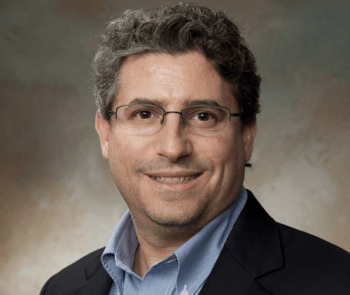Flood Resilience Means Thinking Upstream, Texas A&M Professor Tells US Senate Committee
Texas A&M University at Galveston Professor Sam Brody testified in a recent U.S. Senate hearing on reauthorization of the National Flood Insurance Program (NFIP), urging the committee to not only reauthorize the program, but expand it using existing sources, emphasizing the importance of being proactive.

Brody, a Regents Professor in the Department of Marine and Coastal Environmental Science, appeared before the Senate Committee on Banking, Housing, and Urban Affairs last month. He is a renowned expert on flood and natural disaster mitigation, and coastal environmental planning.
Brody currently leads the Institute for a Disaster Resilient Texas (IDRT), and in the past served as the lead technical expert for Gov. Greg Abbott’s Commission to Rebuild Texas post-Hurricane Harvey in 2017. He has specific expertise in NFIP’s four key areas: flood insurance; floodplain management; floodplain mapping; and mitigation.
The program currently provides over $1.3 trillion in coverage to millions of homes and businesses spanning 20,000 communities across the country. Brody urged the committee to take advantage of FEMA’s existing Community Rating System (CRS) to bolster the NFIP’s reach, effectiveness and impact.
The CRS incentivizes communities to act proactively by adopting mitigation avoidance strategies in exchange for a reduction of insurance premiums of up to 45 percent. Brody said expanding this program would translate into savings at a household level, while still focusing on the specific challenges imposed by human-built environments in urban areas.
“Parking lots, roadways, rooftops, and other impervious surfaces are fragmenting our drainage patterns and putting more water downstream, which means in the people’s homes. And this trend is especially problematic in urban areas where stormwater infrastructure is aging, under capacity and in need of repair,” he told the committee.
Building higher, designating open-space protection areas and encouraging communities to freeboard – elevate existing structures above base flood elevation – can save communities an average of $800,000 per year in avoided losses, Brody said.
Brody has already worked to translate and communicate such crucial data. In concert with Texas A&M-Galveston’s Center for Texas Beaches & Shores, he helped create the Texas Buyers Be-Where website. He described the online resource as “essentially Zillow meets risk, so that a homeowner can log on and see the risk of flooding for their properties.” Using technology, data and mapping, he said it’s possible to create something both actionable and broadly interpretable.
In our current and future environment of increasing climate change effects, thinking ahead and what could be done “upstream” of flooding events is absolutely necessary, Brody said.
He told the committee to lean into the success of data analysis gathered via damage assessments and to consider utilizing natural environmental resources like wetlands “so as to not get into this repetitive cycle of flood loss, recovery, costing taxpayers more and more money.”
He also pointed at a 2022 Texas regulation as a recent sign of success and the importance of data reaching both decision makers and residents. Calling it “the most ambitious flood risk real estate disclosure regulation in the country,” he said the new disclosure law enables renters and tenants to be made aware of flood risk, thus allowing for more informed housing decisions.
Mapping and effective mapping models are and will always be key, he told Pennsylvania Senator Pat Toomey, but ensuring that resulting data is effectively communicated and made actionable across accessible platforms is the future of flood resilience.
Media contact: Andrea Bolt, 409-740-4929, a_bolt@tamug.edu





